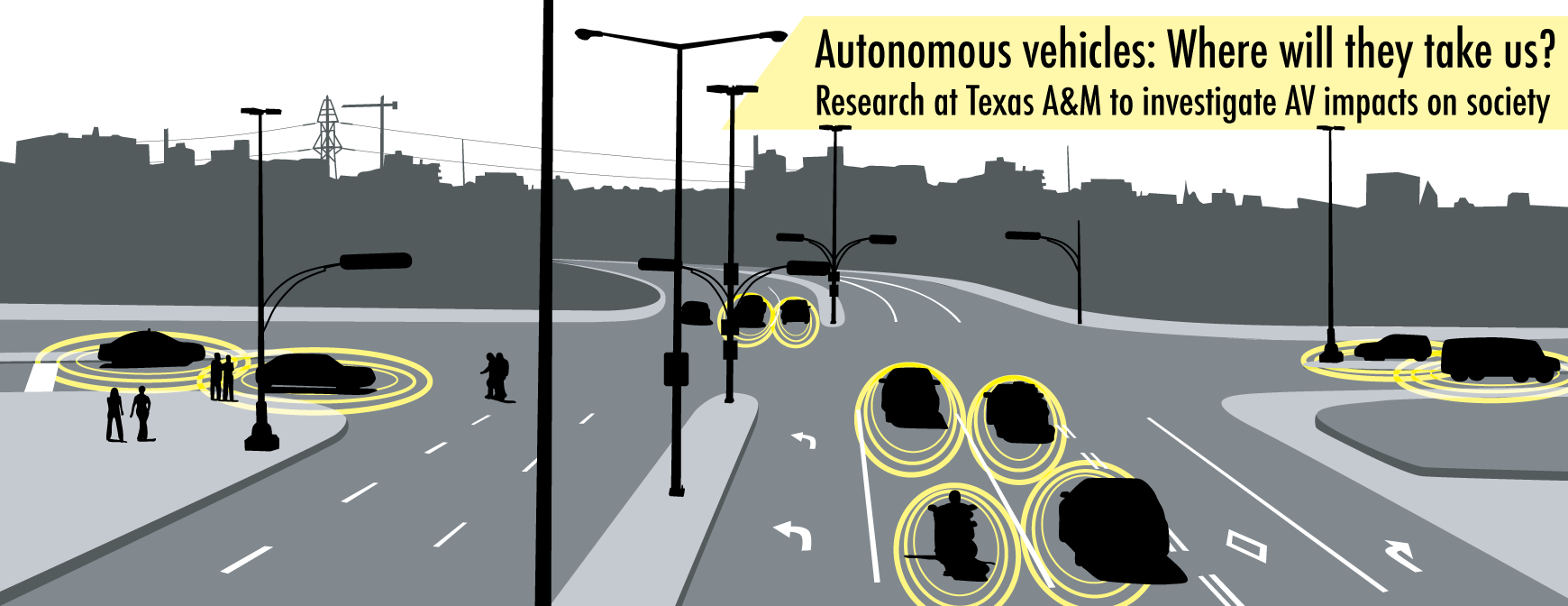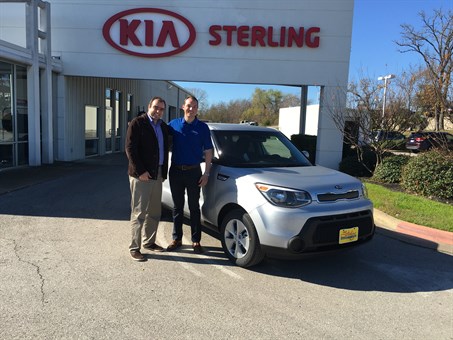
You’ve seen them in futuristic science fiction movies for decades, but the reality is that unmanned vehicles are just around the corner, quite literally. Fully automated vehicles are expected to hit the roads as early as 2018. In the meantime, you might catch the Zachry Department of Civil Engineering’s autonomous vehicle research car, donated in full by the Sterling Auto Group in Bryan, cruising around the Texas A&M University campus. This vehicle will be used to investigate interactions and reactions between automated and regular vehicles, and pedestrians to this technology.
“Not only will our driving environment change drastically, but we can expect the interaction between automated and regular vehicles to be different from the interaction between regular vehicles,” said Dr. Alireza Talebpour, assistant professor in the Zachry Department of Civil Engineering. “There will be a wealth of possible changes to foresee and acclimate ourselves to before automated vehicles can fully integrate.”
The impact of this technology is expected to reach far beyond the transportation systems, impacting our daily lives with changes in driving habits, vehicular movements and safety. Research at the Smart City Lab in the civil engineering department focuses on understanding the interactions between regular vehicles, connected vehicles, automated vehicles and pedestrians on the roads, as well as investigating the effects of these interactions on congestion, safety, emissions, and energy consumption.
“How people move in the built environment has determined the design and orientation of buildings, roadways, and most of urban and suburban developments,” said Dr. Robin Autenrieth, department head of civil engineering. “With the introduction of automated and connected vehicles, there could be significant change to the infrastructure beyond the obvious.”
With the introduction of automated vehicles into daily commuting, many scenarios will arise that need to be anticipated. Automated vehicles will be capable of following other vehicles more closely at distances that are considered unsafe for manned vehicles. This close following feature of automated vehicles will also impact the capacity and efficiency of our roads. Less congestion reduces the travel cost, which in turn may increase travelers and impact longevity of the infrastructure.
A major part of this research will focus on pattern recognition and data visualization, collected on the Texas A&M campus. This data will aid in understanding the underlying behavioral patterns necessary for equipping automated vehicles for safety and efficiency.
The United States Department of Transportation has identified five levels of automation, where level zero corresponds to no automation and level four corresponds to fully automated vehicles. At level four automation, there is no need for a driver and the vehicle can handle all necessary maneuvers from origin to destination. Unfortunately, the limited understanding of driver behavior in a mixed, regular and automated environment prevents the production of level four automated vehicles. Therefore, the current focus of the technology and car industries, with few exceptions, is on level three. At level three automation, the vehicle can handle nearly all maneuvers from origin to destination; however, the presence of a driver is necessary to take over the driving task and handle unexpected and challenging driving maneuvers.
Transition from automated to regular driving is one of the biggest challenges. Research is being conducted on developing a reliable mechanism to provide a safe and efficient transition from automated to regular driving.

“This is an exciting time in the transportation and automotive industry with how quickly transportation is changing,” said Michael Gonzalez, sales operations manager at Sterling Auto Group. “To be a part of the future, supporting this research in our backyard, is a great opportunity for our dealership. We look forward to seeing how this develops and the impacts on the university and the community.”
In addition to the donation from Sterling Auto Group, the Texas A&M University System and the Texas A&M Engineering Experiment Station (TEES) provided start-up funds for this research area.